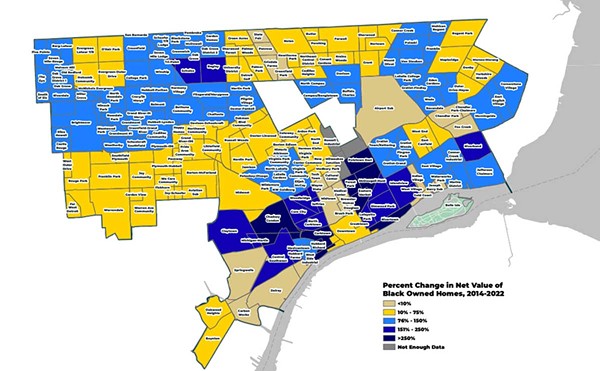Metro Times: What role did you have in the development of Crush?
Stephen Patrick: The owners sought me out in California. They were looking for someone with some experience with the (grape) harvest, which is what the restaurant was named after, the crushing of the grapes. It starts off at 7 o’clock at night. Along with helping out with the crush, I line up whatever we’re going to be eating at about 12 or 1 o’clock. You’d be amazed at how much beer goes into good winemaking. Usually you’re eating pizza or Mexican food. It’s an all-nighter — 7 to 7. It’s a lot of fun. They wanted someone who had some experience working with winemakers, being involved in the vineyards, living there.
MT: Are the grapes harvested or crushed that night?
Patrick: Both. Once the grapes are harvested, the object is that the grape is at the perfect sugar level and from there, as they are harvested, they are dumped into a bin to be crushed. Then the juice is pumped into big tanks, where in the morning that will start the first process of fermentation. They’ll either kill off the wild yeast and add their own, or if it is a wild yeast wine, they’ll cultivate that. That intricate part is beyond important. It sets what you work for all year. That crush is the most crucial part of winemaking.
MT: That said, is it fair to say that you serve California cuisine?
Patrick: Yes, but not too many people use that terminology. It’s actually a negative in California to call something California cuisine, because the state has become such an international melting pot. The amount of Asians, Hispanics, Italians and Japanese that have moved into those areas combined with the fact that agriculture is gigantic. California is the No. 1 food producer in the world. The climate lends itself to growing fruits and vegetables and wheat. Plus, you’re on a coast. The seafood industry is huge, all the way out to Hawaii and up into Alaska. And, of course, the vineyards. Fresh food is bountiful.
MT: Did you just define California cuisine?
Patrick: Yes, I think I did, but what we serve here I would call vineyard-style cuisine. There’s a lot of slow-cooked foods and grilled foods that are really treated simply, with just some good-quality grapeseed oil or olive oil with an emphasis on fresh. One of my favorite questions that I was once asked was, “What is your favorite fish, and how would you prepare it?” For me it wasn’t picking out John Dory or turbot or Dover sole. It was “whatever’s the freshest, thrown on the grill with a squeeze of lemon juice and some herbs and a pinch of chili flakes.” Here we try to serve the freshest products that we can find. I hope to cultivate relationships with some of the local growers here this summer.
MT: With our flagging local economy and a fickle public, we’ve seen several restaurants close. Isn’t this a challenging time to open a restaurant?
Patrick: We did some research and found that Oakland County has its own little niche. I find more people here that eat out six or seven nights a week, more than anywhere I’ve ever been. People here like to eat out. They know every restaurant. They know the owners and the chefs. They are professional eaters, serious foodies with discerning palates in food and wine.
MT: You have an unusual bread policy here. This is one of the only restaurants that “sells” bread, rather than just putting it on the table.
Patrick: It is working for us. I think that bread has taken on a different trend. As America becomes more international it becomes more ethnic. Indian restaurants, for instance don’t put a basket of bread on the table. They do offer a variety of made-to-order breads. We offer artisan breads that are baked just for us, that you can’t buy anywhere else. You get to order the specific type of bread that you like. And not putting a basket of bread on the table allows us to keep our prices down. It’s not so much a policy of charging for bread as it is a way of featuring bread, perhaps with some cheese and olives or as a bruschetta.
Jeff Broder does this twice-monthly food interview for Metro Times. Send comments to [email protected]




